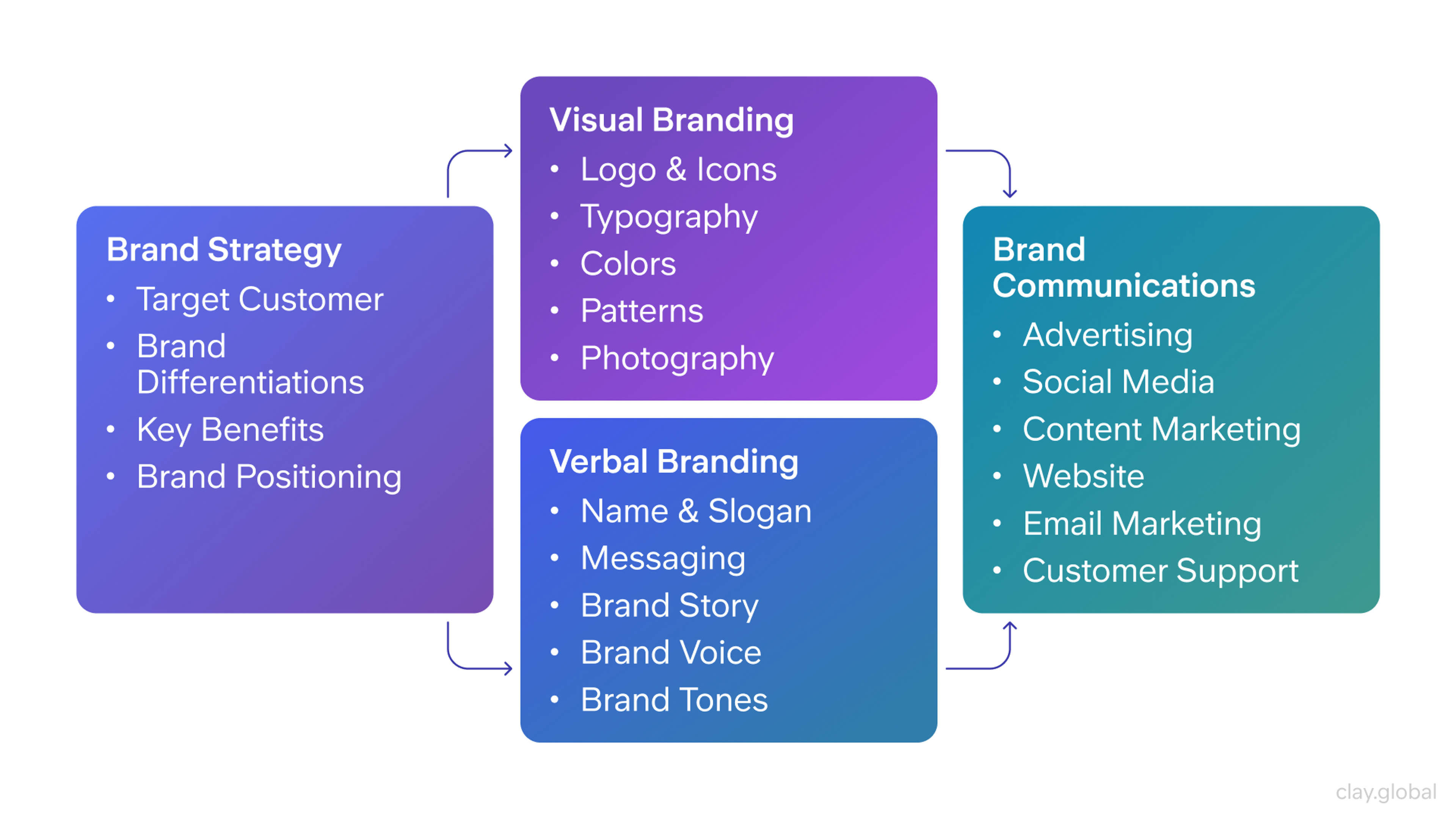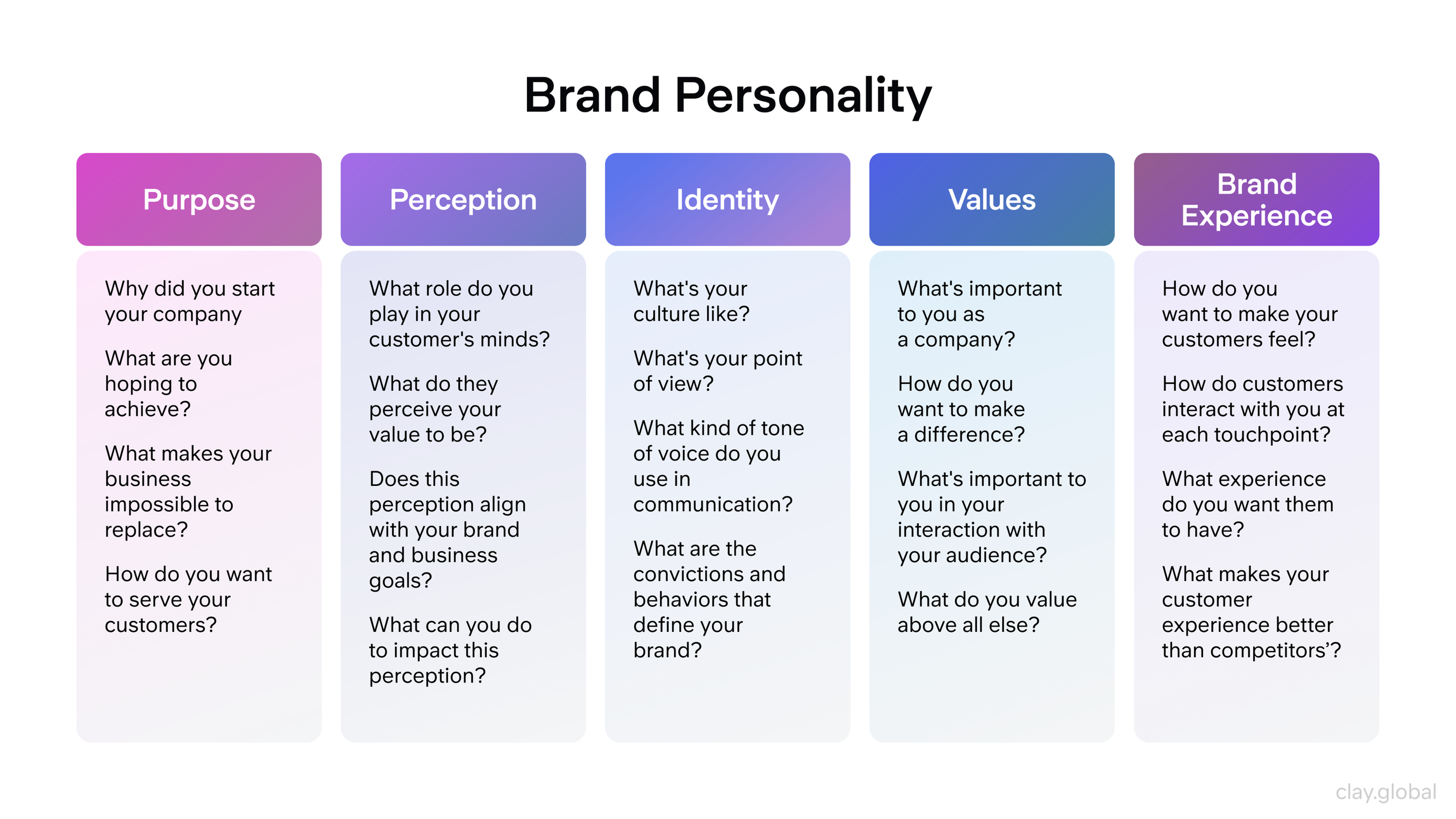If you want your brand to stand out and leave a lasting impression, building a strong online presence is essential. Social media is one of the most powerful tools for growing brand awareness and connecting with your audience. But with endless filters, trending hashtags, and ever-changing algorithms, it’s easy to feel overwhelmed.
That’s where a professional branding agency can make all the difference. They know what works, what doesn’t, and how to shape a strategy that fits your goals.
But if you’re managing things in-house or just want to get better at marketing your brand online, you can take some key steps to make your social media presence more impactful.
The most important thing to remember? Your goal is to get your brand out there and make it stick. That starts with having a clear, consistent brand identity — and making sure that identity shows up in everything you post. From visuals to tone of voice, your content should reflect who you are and help people recognize your brand at a glance.
# 1. Set Clear Branding Goals to Elevate Your Personal Brand
What’s the real purpose of your personal brand statement? We’ll dive into that at the end of this tip. But first, let’s look at why having a clear personal brand matters in the first place.
Throughout this section, we’ve explored how a well-defined personal brand can open doors — whether you’re launching a new venture, trying to stand out in a crowded industry, or looking to boost business growth through stronger sales. At the heart of any branding strategy is one key step: setting clear goals.
Your brand should reflect the value you bring to the table. When done right, it becomes a powerful tool that works in your favor, helping you build credibility, attract the right opportunities, and grow your career or business.
If your goal is to highlight a particular skill or open up new job possibilities, make sure that message is consistent across your platforms. A great place to start is by refining your LinkedIn profile — it’s often the first place people go to learn more about you.
Brand Design Elements by Clay

Looking to grow your audience and create content that actually gets noticed? Twitter (now known as X) is a great platform for sharing bold, attention-grabbing posts that spark conversation and encourage likes, replies, and shares.
If visuals are your strength, Instagram can serve as your digital storefront — a place to showcase your style and personality. Pinterest is also a powerful tool, especially for highlighting design work, DIY projects, and artistic inspiration.
Once you know what you want to achieve, you can build a focused strategy to boost your visibility across the platforms that make the most sense for your brand. This clarity is essential to building momentum and driving results.
Every post, pin, and comment shape your brand. With a solid strategy behind your content and interactions, you can turn social media into a powerful engine for growth. So why wait? Start building your presence — and take your brand to the next level.
# 2. Keep Your Profile Links Fresh
The strength of your online presence depends largely on how current and informative your content is. That’s why it’s important to keep your social media profiles and website links up to date. These links are like your digital handshake — often the first impression people get of you. Whether it’s your latest project, portfolio, business page, or a new campaign, they should always lead to your most important and recent work.
Regularly updating your links ensures that your audience, potential clients, and collaborators always have access to relevant, accurate information. If you're launching something new — like a campaign, event, or fresh content — your links should reflect that right away. It’s a simple way to boost visibility and drive engagement.
It also helps build your credibility. When people see that you’re proactive and organized, it signals that you’re professional and invested in your brand. In a fast-moving digital world, staying visible and relevant isn’t just helpful — it’s essential.
So keep things fresh, be consistent, and put your best self forward online. The more attention you give to your brand, the better the results you'll see.
# 3. Appeal to the Target Audience
As creative or exciting as your brand image may be, it won't be helpful if it doesn't appeal to the masses. This way, you can consider your brand identity as your company's personality. How would your brand sound and act to appeal to your target audience if your brand was a person?
How would they sound and communicate with others? How would they express themself? These ideas should be communicated through your personal branding content's tone, the type of language used, and the style of its visual aspects, among other elements.
Target Market

Language goes hand-in-hand with creating a tone for content, as certain words and phrases will relate to audiences better than others. Suppose your brand is looking to appeal to other businesses in the industry, for example.
In that case, they can use industry terms and vocabulary more than if they were looking to appeal to everyday consumers. Some words and phrases can also be generation - industry groups, or age-specific.
If done well, these wording choices should bleed into the brand's style and vice versa, trying it all together. This will include everything from the color scheme, font, and iconography to the type of photos and videos used.
# 4. Use the Right Platforms
It can be overwhelming when first embarking on a social media marketing journey. Every social media analytics site has rules, norms, and strategies, from TikTok to Facebook and LinkedIn. Using most platforms, the best way to get traction would be to speak to as broad an audience as possible.
Although this can work well for some, it takes a village to run that many social media accounts. Focusing on only a few social media networks can be better if you only have a small team or are just starting.
When picking social media platforms to focus your personal branding efforts on, it's best to look at the target audience, the brand's personality, personal values, and how it communicates. Is your business fun and quirky? Do you prefer humorous video ads?
Is it educational and data-driven in a way that would be communicated best through text and infographics? Or does it rely on emotional connections and loyal customers in a way that would work best with long-form videos such as those on YouTube?
Brand Personality by Clay

Different social media platforms will work best for various industries because of how users navigate the site, the type of social media users they use most often, and the primary user base.
TikTok, for instance, is best for brands looking to reach out to younger customers and for brands that can communicate with short videos. Meanwhile, a company looking for more professional clients should look at LinkedIn.
#5. Create Campaigns on Social Media Accounts
The social media platforms you choose and how you market will also highly depend on your goals and personal branding strategy.
Are you looking to build robust and long-term loyalty, or do you want to reach as many people as possible? Some platforms are better at marketing to potential customers, while others are best at reaching new audiences.
Rather than mold yourself into a platform's norms, picking ones that will work for you and your aim is best.
Think of campaign ideas that will work for your brand identity and audience before marketing on a social media platform rather than thinking of campaigns based on that platform.
This could be anything from running simple ads to holding contests or giveaways and everything in between.
The main aim of most campaigns is to generate interaction and engagement between you and your consumers. For example, a Facebook page or Instagram contest naturally creates interest in engaging content because the audience will share the visual content for entries.
Companies can also use influencers to promote their products, tapping into these well-known figures' audiences to build trust. However, although the goals of many companies are the same (traffic), the way they achieve them can be very different. Think outside the box!
#6. Create Compelling Content
No matter how many ads and marketing campaigns you put out, they won't amount to much if they're not interesting. Content must catch attention and keep it, whether by being memorable, shocking, creating an emotional connection, or compelling in some other way.
A classic approach to compelling video content is to create a story. This helps develop the brand identity in-depth, communicate that persona effectively to customers, and create long-term interest. Audiences also tend to enjoy stories as they're such a familiar form.
Many companies use this tactic on social media profiles to advertise how they help others in the community. Others even use storytelling to invite engagement by asking audience input about where the narrative should go.
Brand Story Template by Clay

#7. Keep It Consistent
Whether your audience, what content you provide, or what social media and campaigns you decide to do, consistency is the most crucial brand identity factor.
If visual branding on social media often changes from campaign to campaign, audiences need help recognizing it as belonging to the company. Building loyalty on social channel will also be more challenging, as consumers must learn what your brand is all about.
This is why it's so important to think long and hard about brand identity at the beginning before emerging into the public eye. Although there can be some trial and error, it's best to stick with your decisions once they've been set.
Staying within a brand identity and coming up with new and innovative ideas that fit within that consistent brand voice and tone can take some creativity, which is why many companies turn to a professional team. But this can also be an excellent exercise for the team to reaffirm the company's core values and goals and move forward with more purpose.
#8. Streamline the Process Using Apps
Posting effective campaigns on various social media channels takes a lot of time and scheduling, which is why so many have dedicated teams of people to do it. Luckily, numerous apps and software platforms can help to streamline the process.
Some social media automation tools can help organize campaigns and keep track of dates. In contrast, others can post them automatically and keep track of analytics and user data to see how successful they've been. This can be great for small businesses or those starting up who often juggle too many projects.
Not only does this give back control, allowing social media posts to be scheduled on your time rather than that of the audience or platform, but it can also be necessary for research purposes. Every campaign should be closely watched to see the results and to look for ways to improve.
This doesn't just have to do with how many people a campaign reaches but who it reaches and in what ways. For example, user location, age, gender, the device used, and other important factors are often tracked and can shape more effective marketing campaigns in the future.
#9. Unlock the Power of Influencers
Influencer marketing is no longer the reserve of big brands with bottomless pockets - it has transformed how companies of all sizes operate.
However, collaborating with influencers is not enough; successful influencer marketing involves meaningful relationships with creators. This takes some degree of planning, work, and doing things with intent.
The world of influencer marketing has changed beyond recognition. Where big-name celebrities and social media icons with millions of followers used to reign supreme, now micro-influencers are in charge.
They may have a relatively small following, but these niche creators deliver more excellent engagement rates and form deeper trust with their fans. This is critical for brands that seek to make strong connections with their customers. The personal touch makes their endorsements much more credible than traditional celebrities.
The Importance of Influencer

How do you identify the right influencer for your brand? Platforms like Meltwater or Brandwatch can help find them by pinpointing content creators who embody your brand ethos and cater to your desired demographic.
Once you have identified the ideal candidate, get in touch - comment on, like, or share their content, message them on their platform of choice, and articulate your objectives. Making genuine, sincere approaches with a well-drafted message increases the chances of collaboration.
The influencer marketing world continues to change, but one thing holds true: Meaningful relationships with creators have the potential to take your brand to new heights.
Whether you are developing your first campaign or refining your last one, the time is now to use the power of influencers to grow your business.
#10. Build a Powerful Personal Brand
Building a personal brand online can be an exciting process, but it is important to note that leaving a lasting impression requires authenticity to self.
Your online presence should portray your values, character, and niche gifts. Knowing how to maneuver on social media is essential, but understanding how to maintain good social standing is just as important.
Consider your social media profile a lively element of your personal brand - your virtual summary displays your qualifications and character. While reposting content is an effective method, it should not be the only route you take to increase brand recognition.
Establish yourself as an industry expert by sharing your original insights and experiences. Remember, you are not only joining the conversation; you are the one directing it.
Engage your audience by mixing up your content. Post your industry news analysis, share life events, and everything else. Whether those moments include travel, hobbies, or behind-the-scenes glimpses of you, showing vulnerability makes your brand more trustworthy.
Don't be afraid to share if you're working from a beachside cafe or juggling a full-time position and side hustle. People love genuine stories, so tell yours proudly.
Worried about how your private data is being handled? You may consider having two separate online accounts, one strictly for personal use and the other reserved for networking purposes.
Private accounts can connect with family and friends, whereas public accounts can network, share knowledge, and highlight your skills. If any of your posts include your employer, ensure to check their social media guidelines to avoid workplace conflicts.
Above all, authentic self-representation across all social media platforms is the key to success these days. Be thoughtful, intentional, and careful about how you portray yourself online.
Social media shouldn't just be seen as a tool; it serves as a platform where professionals can showcase their skills, network, and create their personal brand.
Read more:
The Bottom Line
Social media is a fast-moving marketing environment that requires adaptability to remain relevant and competitive.
Creating a serious social media management strategy or, even better, having a professional team can help to make this process much more manageable.
An organized plan will also help keep everyone on track and ensure that goals are met, leading to tremendous success.
No matter how many platforms you use, what you decide to post, or who you have in charge of marketing, social media can be an excellent tool for your personal life and business to grow with your company.
Even starting small can do wonders for getting your name out there and generating leads as long as you effectively communicate using the concepts of your brand identity.
Good luck!


About Clay
Clay is a UI/UX design & branding agency in San Francisco. We team up with startups and leading brands to create transformative digital experience. Clients: Facebook, Slack, Google, Amazon, Credit Karma, Zenefits, etc.
Learn more

About Clay
Clay is a UI/UX design & branding agency in San Francisco. We team up with startups and leading brands to create transformative digital experience. Clients: Facebook, Slack, Google, Amazon, Credit Karma, Zenefits, etc.
Learn more


